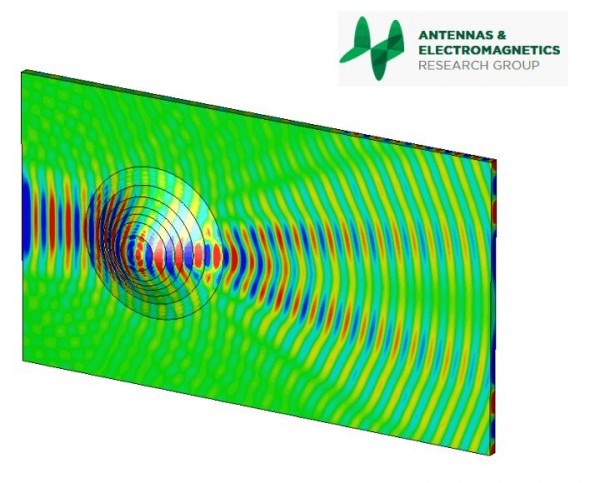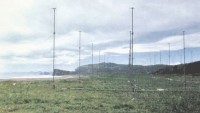UK Researchers Prove Feasibility of Invisibility
| Arthur Dominic Villasanta | | Jul 19, 2016 09:45 AM EDT |
(Photo : QMUL) A graded-index nanocomposite applied to the surface results in a reduction in the amount of shadowing seen immediately after the object. There’s also a noticeable improvement in the reconstruction of wave fronts. The effect is to “cloak: the object.
Scientists in the United Kingdom have, for the first time anywhere, demonstrated a practical cloaking device that renders an object invisible to surface waves.
A team from the Queen Mary University of London's School of Electronic Engineering and Computer Science made an object with a curved surface "disappear" by using a composite material with nano-sized particles that enhanced specific properties on the object's surface.
Like Us on Facebook
This first demonstration of a device that allows curved surfaces to seem flat to electromagnetic waves will have practical applications in antennas with different shapes attached in inelegant positions. The underlying design approach has wider applications, including optics that control any kind of electromagnetic surface waves.
To attain this invisibility, QMUL researchers coated a curved surface with a nanocomposite medium with seven distinct layers. In the resulting graded index nanocomposite, the electric property of each layer varies depending on its position.
The effect is to "cloak" the object to electromagnetic waves, meaning this structure can hide an object that would ordinarily have scattered the wave.
"The design is based upon transformation optics, a concept behind the idea of the invisibility cloak," said study co-author, Prof. Yang Hao from QMUL's School of Electronic Engineering and Computer Science.
"Previous research has shown this technique working at one frequency. However, we can demonstrate that it works at a greater range of frequencies making it more useful for other engineering applications, such as nano-antennas and the aerospace industry."
The study and manipulation of surface waves is the key to develop technological and industrial solutions in the design of real-world platforms, for different application fields, said first author Dr Luigi La Spada also from QMUL's School of Electronic Engineering and Computer Science.
"We demonstrated a practical possibility to use nanocomposites to control surface wave propagation through advanced additive manufacturing. Perhaps most importantly, the approach used can be applied to other physical phenomena that are described by wave equations, such as acoustics. For this reason, we believe that this work has a great industrial impact."
TagsQueen Mary University of London, School of Electronic Engineering and Computer Science, Invisible, Prof. Yang Hao
©2015 Chinatopix All rights reserved. Do not reproduce without permission
EDITOR'S PICKS
-

Did the Trump administration just announce plans for a trade war with ‘hostile’ China and Russia?
-

US Senate passes Taiwan travel bill slammed by China
-

As Yan Sihong’s family grieves, here are other Chinese students who went missing abroad. Some have never been found
-

Beijing blasts Western critics who ‘smear China’ with the term sharp power
-

China Envoy Seeks to Defuse Tensions With U.S. as a Trade War Brews
-

Singapore's Deputy PM Provides Bitcoin Vote of Confidence Amid China's Blanket Bans
-

China warns investors over risks in overseas virtual currency trading
-

Chinese government most trustworthy: survey
-

Kashima Antlers On Course For Back-To-Back Titles
MOST POPULAR
LATEST NEWS
Zhou Yongkang: China's Former Security Chief Sentenced to Life in Prison

China's former Chief of the Ministry of Public Security, Zhou Yongkang, has been given a life sentence after he was found guilty of abusing his office, bribery and deliberately ... Full Article
TRENDING STORY

China Pork Prices Expected to Stabilize As The Supplies Recover

Elephone P9000 Smartphone is now on Sale on Amazon India

There's a Big Chance Cliffhangers Won't Still Be Resolved When Grey's Anatomy Season 13 Returns

Supreme Court Ruled on Samsung vs Apple Dispute for Patent Infringement

Microsoft Surface Pro 5 Rumors and Release Date: What is the Latest?












